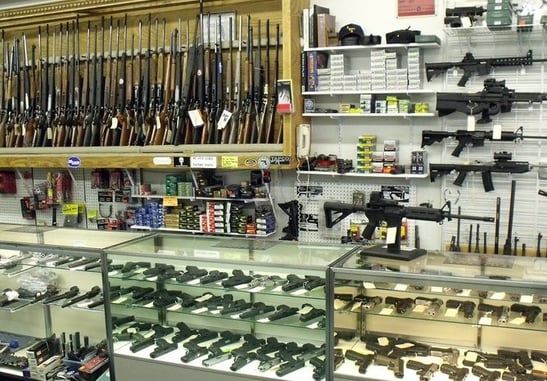Gun failure is one of the worst nightmares for a concealed carrier to go through. In the moment when we depend upon our everyday carry handgun to deliver — and it doesn’t deliver — we have to move quickly.
Thankfully, there are a number of things we can do prior to a gun failure to minimize the chance of it existing.
- Regular firearm maintenance
- Clean the gun after every live-fire use and inspect every month.
- Inspect recoil spring assembly to ensure it is properly lubricated.
- Ensure there are no obstructions or rust along the hammer or firing pin.
- Unload loaded magazines and inspect the spring.
- Make sure you have the right ammunition in your magazine!
- Common mistake: .380 ACP will fit 9mm but will jam!
- 9×19 (Luger) is not 9×18 (Makarov)
- Is your handgun rated for +P or +P+? If not, don’t load.

Gun Jammed — What Next?!
The common adage for semi-automatic pistols in a gun jam situation is “tap, rack, bang”. But, let’s be honest, if you’re in an actual gun fight, you’re going to go straight to “rack”.
- Tap — Tap the bottom of the magazine to ensure it is properly seated in the magazine well of the pistol.
- Rack — Rack the upper receiver to the rear to allow the round in the chamber to eject and a new round to enter. Let the upper receiver close.
- Bang — Shoot the gun at target.
The reason why we suggest running all three is because if the magazine isn’t seated properly, it won’t matter if you “rack” and you certainly won’t get the right “bang” for your buck.
Here’s The Most Common Failures We’ve Run Into:
We’ve covered A LOT of concealed carry defensive gun use stories as well as spoken to plenty of people who have first-hand knowledge of employing a gun in self-defense. Because of this, we’ve managed to glean the following common failures.
-
Failure to load a round in the chamber.
In the heat of the moment, you pull the trigger on target. Nothing happens. Click. Conducting an immediate action drill for a pistol failure such as ‘tap, rack, bang’ will solve this problem but ultimately — it’s because you failed to load a round into the chamber. The gun didn’t fail you.
SEE ALSO: Why we always carry with a round in the chamber.
-
Manual safety has not been disengaged.
You wanted a pistol with a manual safety? You got one. We’re not complaining. There’s a lot of peace of mind people get with having a manual safety that can be engaged and disengaged. The only problem with a manual safety is it’s often left engaged. So long as you’re not firing an old Taurus 111G2, that manual safety probably works just fine and the gun won’t fire.
A lot of people we’ve heard from and have heard from news stories usually say when they fail to fire a round, “my gun failed.”
The gun didn’t fail. It worked precisely as it was designed. In fact, if it did work with the safety engaged, that would be a failure.

-
First round fires, second round jams
If you shoot and neutralize your target on your first shot, good on you. Next round is on us. However, no concealed carrier should ever bet on that happening. A common, frightening mistake is when the first round discharges normally but the next round jams.
There are many reasons this can occur:
- Horrible craftsmanship — the gun wasn’t engineered right. Hello, Hi-Point and Jimenez.
- Wrong ammunition loaded — a lot of gun owners don’t know the difference between .380, 9×18 Makarov, and 9×19 Luger. That’s frightening. But that’s also going to jam a gun by the second round. The first round will discharge just fine but the second round isn’t going anywhere.
- Rusted, damaged upper receiver — the first round racks just fine but the second round gets caught. The least likely of all suspects is a rusted upper receiver. It can happen — it’s just not that common.

-
First round fires, second round fails to load
For this, check the magazine. Chances are good either the magazine didn’t lock properly in the magazine well or it only got a partial lock. Every semi-automatic, magazine-fed handgun is designed to fire the first round and load a second into the chamber. When it fails to load a second round, we’ve covered some of the possibilities. However, the magazine can also be a culprit. If the magazine spring has become rusted, the spring will fail to function properly. Another big culprit is oversized magazines. Often, the longer springs have a harder time pushing past the middle mark. We’re not talking a standard 15-round magazine but something more in line with 30-45 rounds — not a typical choice for concealed carriers.
The best action you can take for gun failure is preventative care.
- Fire your gun once a month.
- Switch out magazines and ammunition regularly.
- Clean your gun after every use.
- Store in a clean, dry place when not holstered.
Your gun should earn your trust and you should develop trust in your gun.














